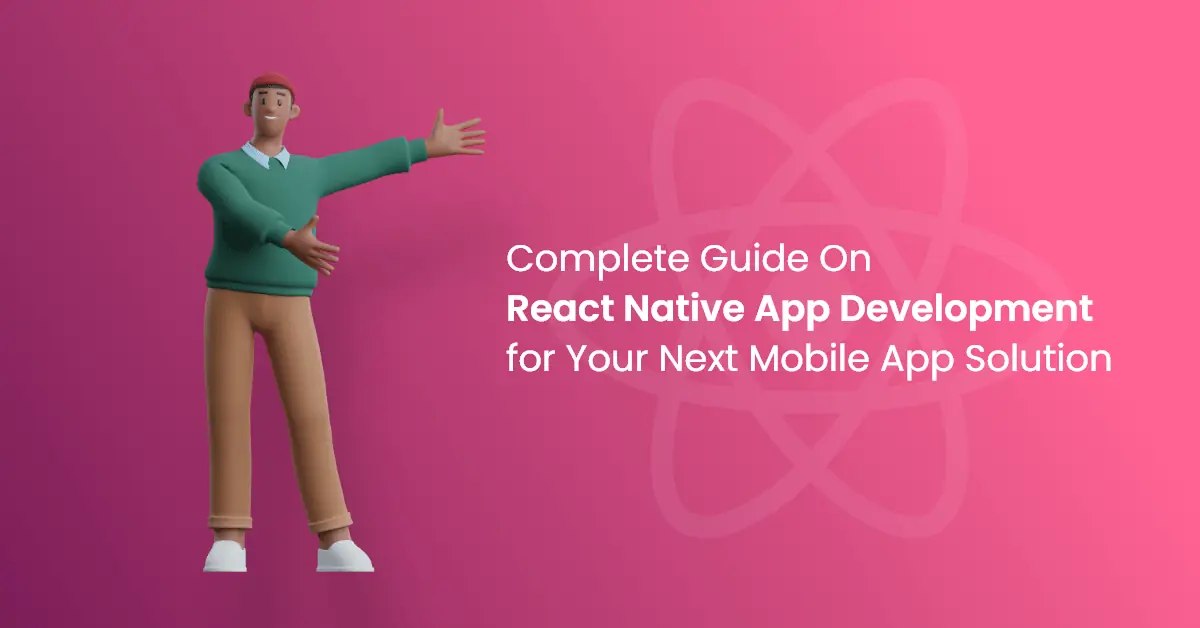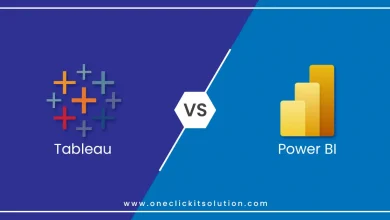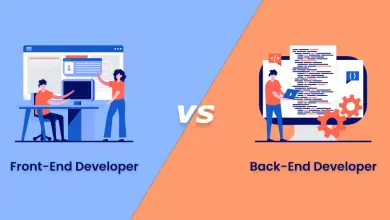What is React Native App? Complete Guide for 2025

Introduction of React Native App
People are increasingly unable to imagine their life without mobile gadgets such as smartphones, tablets, and wearables.
This is especially true for cell phones, which are gaining in popularity year after year.
We use our mobile devices to pay bills, schedule medical appointments, and place food orders. The proportion of mobile devices in Internet browsing has increased over the last 10 years from 1.56% (January 2010) to 51.5%. (September 2020).
React Native development is a framework for JavaScript to construct iOS and Android mobile apps in real time.
It’s built on React, Facebook’s JavaScript toolkit for creating user interfaces, although it’s designed for mobile platforms rather than the web.
This means that web developers can now design mobile applications that look and feel genuinely native, all in the comfort of a JavaScript library we know and love already.
Moreover, as most of your writing of code may be reused between platforms, it is easy to develop React Native apps for Android and iOS at the same time.
React Native apps are developed using a JavaScript and JSX mixture of XML-Esque markings, similar to reacting for the web.
The React Native bridge will then invoke the original rendering APIs in Goal C (for iOS) or Java below the hood (for Android).
Therefore, your app will make it appear and feel like any other mobile application, using real mobile UI components and not web views.
React Native also displays JavaScript interfaces for platform APIs, allowing your Reaction Native Applications to use platform features like the mobile camera or the user’s location.
React Native is compatible with both Android and iOS and can be extended to other platforms in the future.
In this blog, we’ll go through both iOS and Android.
The majority of the code we create is cross-platform. Yeah: React Native can actually be used to build mobile applications ready to produce! A few anecdotes: It has already been used for user-facing applications by Facebook, Palantir, or TaskRabbit.

Top Features of React Native App
1. UI Focused
React Native edevelopers focuses purely on the design of the UI. It is highly responsive and its rendering capacity is by far the best.
2. Reloading in Real-Time
After React, Respond Native could be considered the mobile next step: It builds on the React ideas and allows you to create sophisticated mobile apps. In fact, React Native has a unique feature not present in native frameworks: the ‘live reload’ function, which allows you to rapidly see the impact of the most recent code modification. You can check the impact of what you modify on one screen, if two windows are opened, one contains the code and one displays the cell screen. React Native takes a small amount of time to produce.
3. Facebook is Supporting this Project
Given Facebook’s enthusiasm for the project, it’s safe to assume that they’ll devote a significant amount of time and effort to enhancing the framework and releasing updates on a daily basis. This has been the case thus far, and it will probably continue for several more years. React Native is proving to be a future-proof, long-term solution thanks to Facebook.
4. Write it Everywhere and Use It
The best feature and actual concept in the React Native work are based on code written on almost every mobile platform. It contains iOS, Android, and Windows… We don’t have to write iOS, Android, or C# code for windows in Swift. React Native apps are native, meaning they work on multiple platforms.
5. Open Source
Like many (popular) open-source projects, it is also reassuring to understand that thousands and sometimes many developers all over the world use identical technology, face equivalent struggles, and meet equivalent bugs. Any inquiries are frequently answered by a slew of developers, potential issues are repaired before anyone notices them, and forums are inundated with helpful hints and remedies.
6. Programming Language
The programming language used by a framework has a significant impact on development. A developer’s choice is always influenced by whether a framework uses a popular and widely utilized programming language. The native React uses JavaScript, one of those languages. Without a question, JavaScript is one of the most commonly used and popular programs. The two are HTML and CSS, one of the world’s three core web (WWW) technologies. Anyone with little experience in web app development can use JavaScript. In addition, JavaScript also builds popular Web frameworks. The programming language is also simple and easy to learn.
7. Strong Mobile Environment Performance
Mobile devices are very well adapted to the React Native Architecture. It uses the GPU (Graphics Processing Unit), whereas native systems rely more on the CPU (Central Processing Unit). When compared to hybrid technologies, which were formerly the only choice for cross-platform development, React Native is lightning fast.
8. Third-Party Library Support
There is always greater value in the use of third-party libraries. This makes it possible for developers to decide for themselves. That’s both excellent and horrible at the same time.
9. Accessibility
The accessibility of the React Native build is improved. The Accessibility API announcement has been moved up from the prior one. Roles, flags, action support, and many other things have changed. Other improvements include support for “reduced motion,” improved Android keyboard accessibility settings, and CALayer for drawing text, among others.
10. Front-End Support
Flutter has an advantage here. Flutter provides excellent user interface support. Flutter comes with several appealing in-built widgets that are simple to utilize. React Native also includes some appealing user interface possibilities. Native components and declarative UI are supported. Although Ionic has a diverse set of UI designs, it adheres to the standard HTML and CSS methodology.
11. Community Support
All three frameworks are open source, so the external contribution is always made, knowledge is passed and problems are resolved effectively. Flutter is still struggling, although Ionic and React Native have large communities. It is still very new, and while its popularity is rapidly growing, its community has yet to establish itself.
12. Auto-linked Native Modules
The React Native CLI’s ‘Autolink’ function has been improved to make it more user-friendly. It is still possible to avoid utilizing React Native Link, which makes development easier than before. For the convenience of developers, the group has modified a connecting technique.
How Does React Native App Works?
As already mentioned, React Native is written with a JavaScript and JXL mixture, an XML-like markup code.
The framework can communicate with threads in both realms – JavaScript-based threads and existing native app threads.
How is this communication functioning? React Native uses a ‘bridge.’ The bridge function permits two-way communication between JavaScript and native threads, despite being written in separate languages.
This means that if you already have a local Android or iOS app, you can continue to use its components or move towards React Native App Development.
Benefits of React Native App
1. Cheaper than Native Development
If you only have to build an application in JavaScript once when using React Native. Following a native method, on the other hand, necessitates creating two apps from scratch, one for iOS and one for Android. As React Native requires you to write only one code, you need two teams of developers and save twice the costs for construction and maintenance otherwise.
2. Third-Party Plugin Support
Certain components are missing from the basic React Native framework. It assures developers have access to plugins for third parties, such as JavaScript modules and native modules, to compensate. For example, if a developer wishes to include Google Maps in his project, React Native allows him to connect the plugin to a third-party/native module.
3. Excellent Performance
Responding indigenous apps practically work much like a native application produced on the iOS or Android platform. They are also quick because the programming language for mobile devices is optimized. Instead of using the CPU principally, the React Native apps use the Graphical Processing Unit (GPU). This makes them significantly quicker than hybrid technology on multi-platforms.
4. Increased Stability and Reliability
React Native is also essential in simplifying the binding of data to ensure parent data is secured and that the child component does not alter it and so makes the apps stable and reliable. To modify the item, developers must first change their situation before all updates are systematically applied. This exercise will only allow the components to be updated.
5. Moveable
If app developers want or want to move the app into another development framework for the future, they don’t have to start from scratch. You can export the app to Android Studio or Xcode from React Native. This is a significant benefit of adopting React Native for mobile app development, and it increases the flexibility of the framework.
6. JavaScript
According to a Statista analysis, JavaScript is widely used by developers all over the world. Around 68% of respondents use JavaScript according to the report. Because React Native is built in JavaScript, developers aren’t frightened to use it.
7. Existing App Enhanced
Have you already an app, but want to cost-effectively improve it? We can attach React Native UI components to an existing app without having to rewrite it. This can be useful when you only want to improve an existing application rather than completely rewrite it.
How Much Does it Cost to Develop React Native App?
React Native is one of the ideal options for businesses and startups looking for cost-effective app development.
Nonetheless, just like cost estimates for other app development, revealing the actual React Native app development cost is difficult.
The cost of the development of React Native applications relies heavily on app complexity and business requirements.
The cost of developing a react native app is determined by several criteria, including the app’s category, design complexity, number of features, development business location, maintenance, and so on.
Many companies today are changing to the React Native App development framework.
If you are looking for an affordable application, React Native is a perfect choice. Just follow the factors to decide on the final cost for the development of the React Native application or contact any React Native app development company such as OneClick for further information.

Why Choose Us for Top React Native App Development?
We believe that every small company should have the chance to use the digital age through which we live, enhance reach, sell digital apps and web services, compete online with the boys and achieve ongoing growth and growth.
We believe this is possible through offering digital products and services of extremely high quality that give you the edge you need to compete and win.
It simply won’t cut the average or ordinary in a competitive sea. You require something more… a service provider who is as invested in your company as you are and is dedicated to seeing it thrive. Hire React Native Developers!





